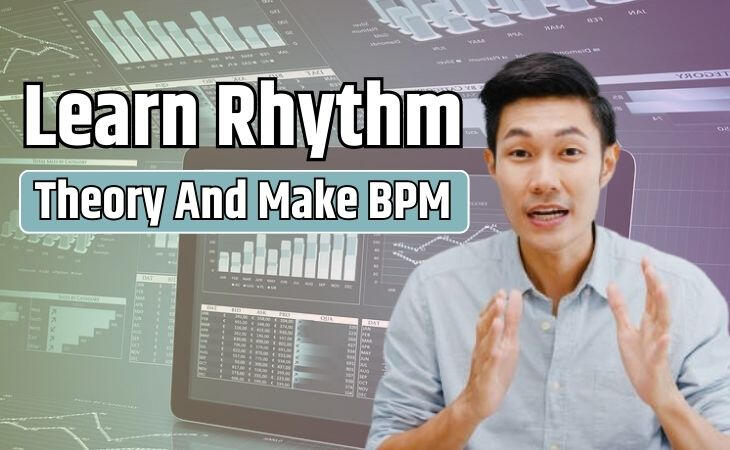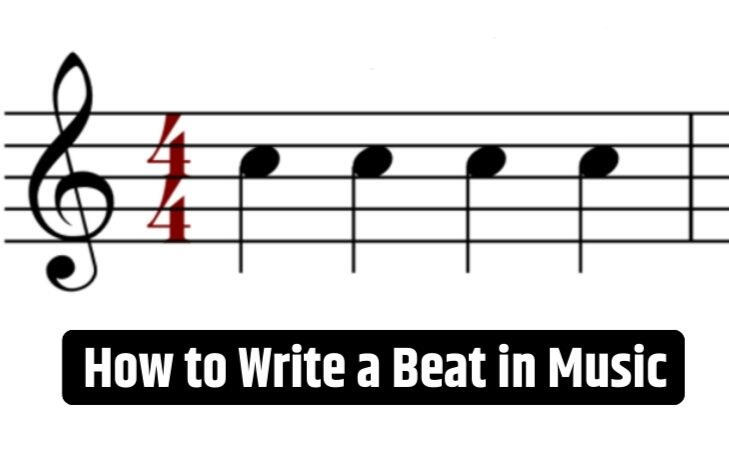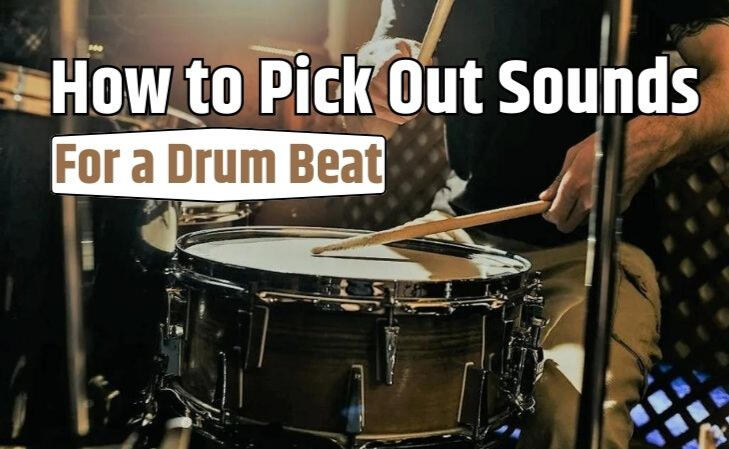How to Learn Rhythm Theory and Make BPM

The beat in music serves as the fundamental core, analogous to the center of everything. In this analogy, notes are akin to words, while rhythm represents the letters that construct and give structure to each word and sentence.
Rhythm essentially functions as the language that enables musicians and artists to harmonize their playing. It serves as a cue for the audience, indicating when to applaud, and guides dancers by dictating when to move.However, comprehending the beat in music and mastering the ability to visualize and perform beats can pose a challenging learning curve.Fortunately, by grasping fundamental rhythm theory concepts and utilizing easily accessible tools, individuals can embark on a path towards creating and performing exceptional beats.This article delves into all the essential aspects of understanding and utilizing the beat in music.
What is the Beat in Music?

The beat in music is the number of pulses felt within a specific time frame, typically referred to as a bar. It is determined by the top number of the time signature, while the subdivision of these pulses is indicated by the bottom number.The beats are influenced by factors such as tempo, their division, timbre, and note value. However, grasping the fundamentals of rhythmic theory is crucial for comprehending beats in music.
Understanding Rhythm Theory
In Western music, understanding rhythm theory requires a grasp of notation composers needed a system that could be comprehended collectively by a group of musicians.For instance, in Indian tabla playing, a master demonstrates a rhythm, and the student attempts to replicate it, typically starting at a slower pace, then progressing with the master until proficient enough to perform solo at full speed.This method of learning rhythm—within a mentor-apprentice dynamic, engaging in collaborative practice, and advancing through skill levels—is crucial, as rhythm is best internalized through active participation and practical experience.Nonetheless, Western rhythm theory and notation remain highly beneficial for conveying rhythms consistently and comprehensively across a broad ensemble.
Music Notation
Understanding music notation is crucial for musicians, as it provides a clear framework for both rhythm and pitch. Time signatures establish the rhythmic structure, while notes and rests within each bar dictate what actions the player should take.Notation represents note values, rhythms, and other musical elements like ties, dots, duplets, and triplets, creating a universally understood grid among musicians.To truly grasp music notation, it's essential to practice clapping exercises. These exercises help internalize the rhythmic grid by saying aloud the subdivisions while clapping the notes.Numerous tutorials are available for mastering sight-reading and rhythm through clapping exercises, enabling musicians to tackle more complex rhythms with syncopation, poly meters, odd time signatures, and poly rhythms with proficiency.
How to Write a Beat in Music

Having a basic understanding of rhythm is so valuable for improving your musical vocabulary and deepening your understanding of what’s going on in track—it’ll help you hear and understand what other artists are doing too.But whether you have a bit of theory knowledge or not, its super easy to write beats especially with modern DAWs, the MIDI roll and loops.The key to writing a good beat however is being clear about your goals from the outset.That means picking a genre and understanding how different genres use specific rhythms and sounds.
Why Genre is a Primary Driver of Inspiration
Understanding the importance of choosing a genre before starting a beat production is crucial as it provides a clear direction for the rhythms and sounds you'll use or create.Each genre has distinct rhythmic characteristics that are consistently present in songs belonging to that genre.For instance, house music typically employs 909 sounds, utilizes four-on-the-floor kicks, includes rides on the off beats, and often incorporates a conga pattern.Drum and bass music, on the other hand, relies on break beat samples and typically ranges from 130 to 140 beats per minute (BPM).Boom bap music often features simplified funk breaks that repeat frequently and includes one-shot acoustic snare and kick samples.Trap music is known for its use of 808 sounds, heavily syncopated hi-hat rhythms, and a snare placed on beats two and four.By studying the genres you enjoy, you can gain insight into the instruments and rhythms that contribute to their unique sonic identities.
How to Pick Out Sounds for a Drum Beat

When it comes to drums, there are several instruments that are commonly used, typically found in the traditional drum set used in live music.A standard drum set includes a kick drum, snare drum, hi-hat, ride cymbal, crash cymbals, and toms. When producing beats, it's important to consider these instruments and their combinations to create well-rounded drum parts.Additionally, incorporating auxiliary percussion instruments like clave, cowbell, congas, bongos, bells, gongs, and others can add depth and interest to your beats while also helping to define the genre, as different styles of music often incorporate specific auxiliary percussion elements.Here's Anthony's favorite DAWs for music production.
Beat making with software and DAWs
Digital Audio Workstations (DAWs) offer extensive visual control for creating beats, making them an ideal starting point.When using software, beat creation typically occurs either on the DAW's timeline or in the MIDI roll. Each has distinct functions suited for specific purposes: the timeline is ideal for arranging loops via drag-and-drop, while the MIDI roll excels in programming one-shot samples to create custom rhythms.Both methods heavily rely on quality samples, as many DAWs lack meticulously crafted loops or sample packs. Thus, having access to great samples is crucial for effective beat programming.
Hardware Drum Machines
Hardware drum machines and samplers were foundational to the origins of beat-making, particularly in 90s hip hop production where tools like the TR-808, MPC, EMu, and TR-909 were widely utilized.These hardware instruments enabled producers to create intricate rhythms, synchronize MIDI with synthesizers and sequencers, and explore creative possibilities outside of digital audio workstations (DAWs).Today, there is a diverse range of drum machines and samplers available that not only function as standalone units but also seamlessly integrate with modern DAWs.Working with hardware setups can be highly inspiring, providing opportunities for sound experimentation and hands-on control over synthesizer configurations.Additionally, the workflow associated with hardware production tools carries a historical legacy that continues to inspire producers across different eras.
The Future of Beat Making: Embracing New Technologies
The future of beat making looks brighter than ever as the music industry continues to harness the power of emerging technologies like AI.As we move forward, these technologies aren’t just influencing how we create beats—they’re reshaping the landscape of music production entirely.
Artificial Intelligence in Beat Making

AI is making significant strides in the music industry, especially in beat-making.Machine learning algorithms now have the ability to analyze vast amounts of music data, learning and reproducing stylistic elements to create entirely new compositions.Although there is an ongoing debate about the creative limitations of AI, it cannot be denied that AI-powered software serves as a valuable tool for composers and producers.AI can accelerate the creative process by proposing melodies, harmonies, and rhythms based on an initial idea from the producer.This functionality is particularly beneficial when facing a creative block.Additionally, AI software enables a unique form of collaboration where it can generate and suggest ideas, while the human creator retains the final decision-making authority, ensuring that the resulting beats maintain a personal and emotional touch.
FAQs
1. What is the beat in music ?
The beat is the number of pulses felt within a bar, determined by the time signature's top number and subdivided by the bottom number.
2. Why is it important to choose a genre before making a beat ?
Selecting a genre provides direction for rhythmic and sound choices, aligning with the unique characteristics and conventions of that genre.
3. How can AI contribute to beat-making ?
AI accelerates creativity by suggesting melodies, harmonies, and rhythms, serving as a collaborative tool while allowing human creators to maintain artistic control.
Conclusion
Mastering rhythm theory and creating beats involves understanding the beat's pulse within a musical framework, learning notation for clear communication, and utilizing tools like DAWs and hardware drum machines.Choosing a genre guides the rhythmic and sonic elements of beat production, while studying existing genres provides valuable insights. Whether using software or hardware, access to quality samples is key.Looking ahead, emerging technologies like AI are shaping the future of beat making, offering innovative ways to accelerate creativity while maintaining the artist's unique touch.Ultimately, exploring these avenues empowers musicians and producers to craft exceptional beats and push the boundaries of music production.